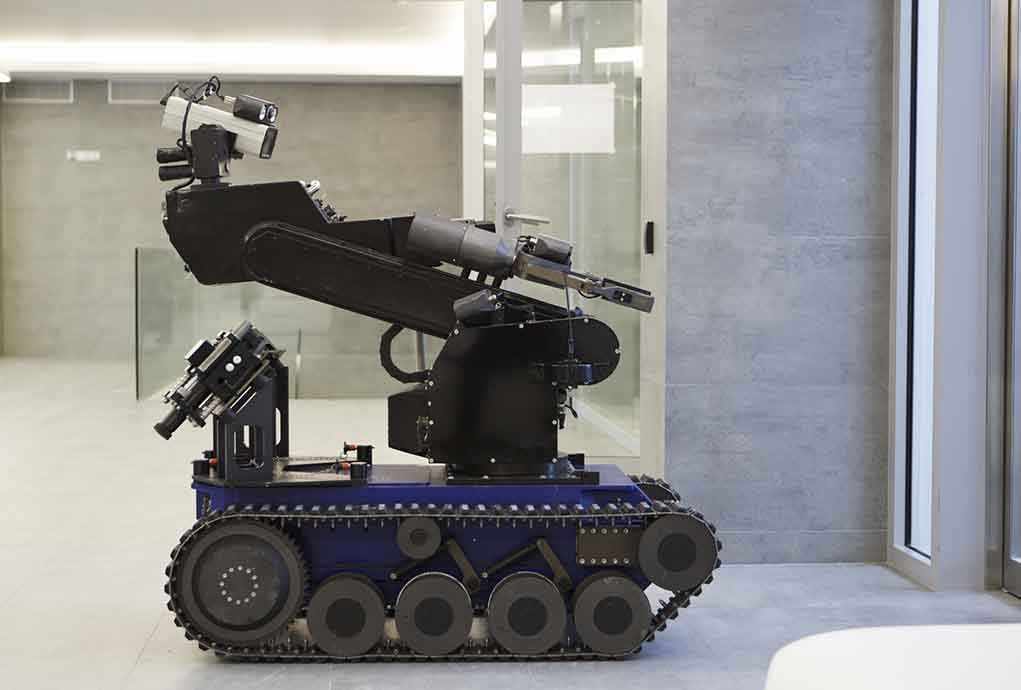
New York City’s $400,000 investment in military-grade police robots reignites fierce debate over the spread of surveillance technology, government spending priorities, and the risk of escalating police militarization in America’s cities.
Story Snapshot
- The NYPD has purchased 14 remote-controlled “throw bots,” continuing a trend towards high-tech policing tools.
- Supporters claim these robots protect officers in dangerous situations, but critics warn of growing surveillance and militarization.
- The move follows past controversies over robotic dogs and has sparked renewed concerns about oversight, privacy, and spending priorities.
- Industry analysts and civil liberties groups are calling for strict transparency and limits on deployment to prevent abuse or mission creep.
NYPD’s Robotic Expansion Highlights a National Trend
The New York City Police Department’s recent purchase of 14 remote-controlled “throw bots” from ReconRobotics adds nearly $400,000 in taxpayer-funded technology to its arsenal. These robots, equipped for remote operation in hazardous environments, are designed to replace human officers in situations such as standoffs or incidents involving emotionally disturbed individuals. The NYPD’s ongoing investment in advanced robotics follows previous high-profile acquisitions of robotic dogs—known as Digidogs—that were initially withdrawn after public outcry but later returned under Mayor Eric Adams’ administration.
Proponents within the NYPD and city government assert that these robots represent a crucial upgrade for officer safety and operational effectiveness. By deploying machines into potentially deadly situations, the department aims to reduce the risk to human life and enhance tactical decision-making. Mayor Eric Adams, a vocal supporter, frames the technology as essential for modernizing urban law enforcement and confronting the unique security challenges of America’s largest city. However, the high cost of these purchases has fueled debate about responsible use of public funds, especially as residents face persistent questions about crime, city services, and fiscal priorities.
Militarization, Oversight, and Public Backlash
Civil liberties organizations and critical residents have repeatedly voiced concerns that the introduction of military-grade robotics signals a troubling shift toward the militarization of local police. The appearance of these robots—often described as resembling “Wall-E”—has become a flashpoint for broader anxieties about government overreach and the gradual erosion of privacy. Previous deployments of Digidogs in New York City were halted amid intense public backlash over fears of constant surveillance and fears that such technology could be misused for purposes beyond emergency response. Critics now worry that the throw bots, while less visually imposing, could normalize robotic surveillance and set dangerous precedents for law enforcement agencies nationwide.
Experts in criminal justice and technology ethics have emphasized the urgent need for clear and transparent policies governing the use of police robots. They argue that without robust oversight and strict deployment guidelines, there is significant risk of “mission creep”—where tools introduced for narrow purposes gradually expand into more routine or intrusive policing. The NYPD’s current plan restricts robot use to specific high-risk scenarios, but watchdogs insist that ongoing scrutiny and public accountability are necessary to prevent misuse or overextension. The debate has also drawn attention to the power dynamics between law enforcement, technology vendors, and the affected communities, with advocates warning that unchecked innovation could undermine civil liberties and erode public trust.
Broader Implications for Policing and American Values
The NYPD’s adoption of remote-controlled robots reflects a broader national trend of increasing reliance on sophisticated technology in policing. While such advancements can offer tangible benefits for officer safety and operational effectiveness, they also raise fundamental questions about the balance between public safety and individual rights. For many conservatives and constitutional advocates, the expansion of surveillance and militarized tools in local law enforcement evokes concerns about government overreach and the potential weakening of foundational American freedoms. The significant public expenditure required for these technologies further complicates the debate, as taxpayers weigh the benefits of high-tech policing against competing needs in their communities.
NYPD putting up nearly $400K on Wall-E style robot with ‘crazy mechanical arm’ https://t.co/tRsE9giGxJ pic.twitter.com/6EsfGMevPx
— New York Post (@nypost) August 9, 2025
As these robots become operational within the NYPD’s Emergency Service Unit, New York City residents and observers nationwide are left to grapple with the implications. The outcome of ongoing debates over transparency, oversight, and the responsible use of technology in policing will shape not only the future of law enforcement but also the broader contours of American civil liberties and government accountability. The controversy surrounding the NYPD’s throw bots serves as a test case for cities across the country, highlighting the urgent need for vigilant public engagement and principled leadership to preserve core values in the face of rapid technological change.
Sources:
NYPD buys 14 military-grade ‘throw bots’ for dangerous situations
NYC spends $222K on throw bots for NYPD












